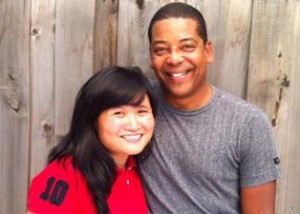Behind-the-Toronto-scene peek at Factory Theatre’s new post-drama dramatic direction
Early next year, Toronto’s Factory Theatre will launch its first season following a year of turmoil that rippled out across Toronto’s theatre community. In case you missed any of the drama that engulfed Factory this year, here’s a brief recap of some recent episodes:
Last June, Factory’s board of directors dismissed artistic director and founder Ken Gass over a renovation dispute; prominent playwrights withdrew their performances from its upcoming season in protest and called for a boycott of the theatre; Ken Gass called his relationship with Factory Theatre history; and prominent Toronto theatre artists Nina Lee Aquino and Nigel Shawn Williams decided to rise to the challenge of keeping the Factory humming as interim co-artistic directors.
Weary of the offstage theatrics, I asked Aquino and Williams the question no one has really answered: how will this affect Factory Theatre’s upcoming season?
The good news is that there will be one.
“Coming off the crises,” Aquino told me, “you can’t get any lower than that. We want to focus on the work and keep alive the mandate of Factory: nurturing Canadian theatre.”
To that end, the interim co-Artistic Director role shared by Aquino and Williams looks promising. The pair have steered the theatre back on course – “the publicist has something to publicize,” in their words – and crafted an impressive lineup featuring Iceland, a favourite at this year’s SummerWorks Festival, and a co-production with Acting Up Stage Company, Do You Want What I Have Got? A Craigslist Cantata, co-written by CBC Radio’s Bill Richardson. The season is rounded out with Every Letter Counts (written by Aquino and directed by Williams), and Stopheart by Amy Lee Lavoie.
Gamechangers?
It’s a lineup that expands on Factory Theatre’s mandate of supporting Canadian theatre in important ways.
“It was very important to us to have another female writer, and to open up the scope of multiculturalism,” says Williams. “We’re choosing plays for their substance and the strength of the writer and the work. Because of who we are, we look at things in a larger scope.”
While I doubt I’m the only Factory Theatre enthusiast excited by this new direction, both Williams and Aquino emphasize that this is not a concerted effort to alter or one-up the legacy they’ve inherited.
“As artistic directors,” explains Aquino, “I’m female, he’s male, and in terms of our artistic backgrounds in the community, I feel like we’ve created a season that’s eclectic but solid.”
“We’re very aware that it’s an interim position,” says Williams. “What we’re trying to do is work toward the mandate of Factory Theatre.”
“We’re trying to do our best in a game that has no rules.”
If the Aquino-Williams stewardship of Factory Theatre accomplishes little else, it will have proven that collaboration and a willingness to negotiate can yield a fantastic season.
“We’re so entrenched with models in Toronto theatre,” says Aquino. “The idea that it can only be done by one person, a season can only look a certain way. Having two interim co-Artistic Directors has been a chance to say, ‘hey, this can actually work: there is a viable collaborative model for any theatre company.’”
“One of the best things has been this spirit of collaborating,” adds Williams. “It’s working for us, and if we can springboard Factory into a healthier future, that’s a success.
Does this paper over Ken Gass’ dismissal and the ensuing controversy? Does it excuse it? I doubt it. But at a time when arts budgets are being slashed across the country, it’s encouraging to see artistic infighting set aside.
“What we’re focusing on is what’s right now,” says Aquino. “We were hired to help bring Factory back on its feet. If another person takes over, they’ll bring their own sensibilities to the programming.”

